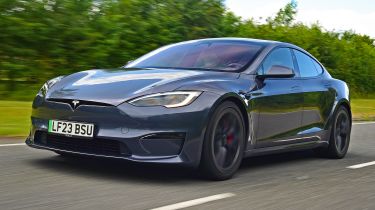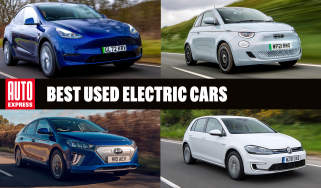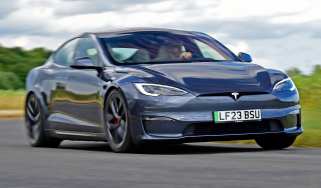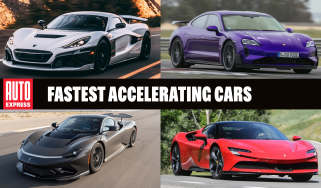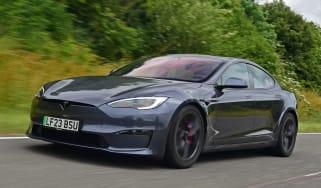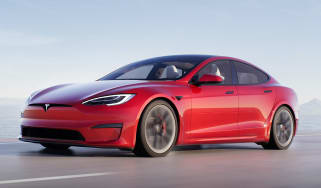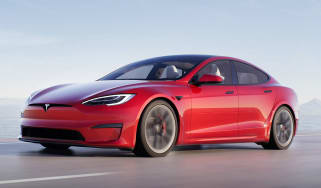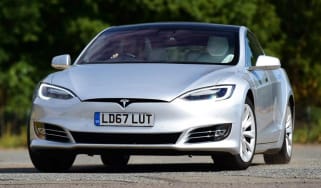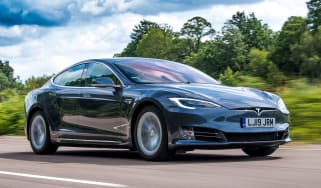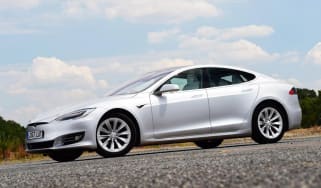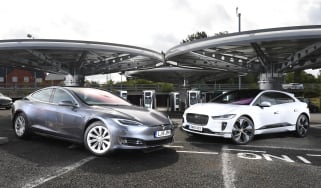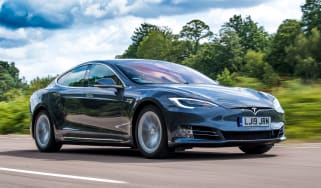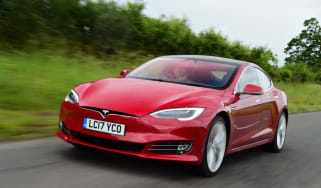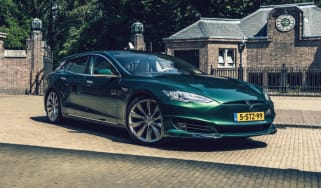Tesla Model S review
The all-electric Tesla Model S is more impressive than ever, but it’s left-hand drive only and new rivals mean it’s got a fight on its hands

The Tesla Model S is finally back on sale in the UK, and it’s better than ever. The updated version of Tesla’s premium all-electric saloon has a huge driving range, features simply excellent technology and is hugely practical. The standard dual-motor version will be powerful enough for most drivers, but the fabled straight-line performance of the Model S Plaid has an undeniable allure and will entice more than a few buyers.
Even the far-from-perfect build quality of earlier examples is vastly improved and Tesla has made the controversial steering yoke optional – hallelujah! However there’s an even bigger caveat potential buyers will have to wrestle with: the Model S is now left-hand drive only. We know Tesla likes to do things its own way a lot of the time, but we expect driving on the wrong side of the car will be a dealbreaker for potential UK buyers.
About the Tesla Model S
A combination of searing performance, slippery looks and a cool, high-tech, minimalist cabin dominated by a big central touchscreen has proved highly attractive to buyers around the world for the best part of a decade, making the Tesla Model S the undisputed leader in Electric Vehicle (EV) luxury.
At least it did, until the mainstream auto industry started to catch up, and now buyers have the choice of tantalising EV rivals that include other executive saloons such as the Mercedes EQE and Genesis Electrified G80, sportier and more engaging alternatives such as the Porsche Taycan and Audi e-tron GT, and more luxurious limousines including the Mercedes EQS and BMW i7 – our Luxury Car of the Year for 2023.
The new Lucid Air poses even more of a challenge to the Model S. It’s not available to buy in the UK just yet, but the Lucid’s comfortable ride, hugely spacious and luxurious cabin, spectacular performance and jaw-dropping looks suggest the once-novel Tesla may be running out of time as the leader of the premium EV pack.
Used - available now

2016 Tesla
Model S
78,000 milesAutomaticElectric
Cash £18,999
2019 Tesla
Model S
32,883 milesAutomaticElectric
Cash £31,400
2016 Tesla
Model S
69,380 milesAutomaticElectric
Cash £26,087
2016 Tesla
Model S
73,000 milesAutomaticElectric
Cash £16,950That said, the Tesla Model S is the car that helped to make EV ownership desirable, which paved the way for cars like the Air, Taycan and e-tron GT. In terms of size, the Model S falls into the executive sector, but while the five-door hatchback body is fairly conventional, it beats many rivals on practicality, thanks to the compact packaging of the electric-drive system. There's also extra luggage space under the bonnet where an engine would normally reside.
Constant updates to the Model S mean the current range is quite different compared to when the car was launched. There was a facelift in 2016 where the nose lost its fake grille, and brought the Model S into line with the Model X seven-seat SUV, while the updated version that arrived in the UK in 2023 introduced far more significant changes.
Tesla used to give different versions of the Model S a number to identify them. In the past this has included 60, 60D, 70, 70D, 75, 75D, 85, 85D, P85+, P85D, 90, 90D, P90, 100D and P100D versions. The numbers signified the kWh (kilowatt-hour) rating of the lithium-ion battery pack, with a larger number signifying more power and greater range. The D identifier meant dual-motor, so was applied to the four-wheel-drive variants.
The lineup is a lot simpler now, with just two versions available: the ‘standard’ dual-motor Model S which has a claimed range of 394 miles and produces a very generous 661bhp. Meanwhile, the Model S Plaid uses three electric motors – two on the rear axle, one for the front – with a combined 1,006bhp that allows it go from 0-60mph in less than two seconds, according to Tesla. The maximum range is equally formidable, with up to 373 miles possible on a single charge.
You can spot the updated Model S version by its new front bumper, while the Plaid gets extra aero tweaks with a lower front splitter, revised rear diffuser and a subtle spoiler on the boot lid. The more obvious changes are inside, where you’ll find a new and even more minimalist cabin design, which is available with either a traditional round steering wheel or an aeroplane-style steering yoke. The original Model S’s portrait-orientated touchscreen has also been replaced by a 17-inch landscape display.
Aside from the steering yoke, the most controversial feature on the Model S is Tesla's Autopilot. It's at the cutting edge of autonomous driving technology, but the name is a little misleading, because the driver cannot hand over complete control of the car to the electronics. However, it does allow for an element of 'hands-free' driving, on the motorway especially, although the driver does need to maintain concentration on the road ahead in case the electronics miss something. Latest Autopilot versions include the ‘Summon’ feature which allows owners to direct their car short distances to their location using Tesla’s app, and the self-parking feature has been upgraded.
Frequently Asked Questions
For an alternative review of the Tesla Model S, visit our sister site drivingelectric.com...
